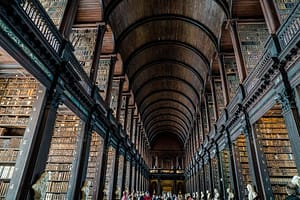For as long as it’s been around, Dublin has looked beyond Irish shores for inspiration. Once the second city of the (British) empire, Dublin has always maintained a pretty cosmopolitan outlook and in the last two decades has conspicuously embraced diversity and multiculturalism. You’ll hear languages and eat foods from all four corners of the globe, and while it used to be said that ‘real’ Dubs had to be born within the canals like their parents and grandparents before them, these days you’re just as likely to meet a Dub whose parents were born in Warsaw, Lagos, Cairo or Beijing.
Residing in a wide bay, Dublin lies between Howth in the north and the headland of Dalkey to the south. The River Liffey, which flows into the harbor, slices the city in two. Several bridges span the north-south divide, the most famous of which is O’Connell Bridge. Pre-independence Dublin was once the second city of the British Empire, the graceful Georgian architecture and picturesque parks bearing testament to a troubled legacy. Ireland’s capital has given the world such renowned literary figures as Yeats, Beckett, Joyce, Shaw, and Wilde. Dubbed a UNESCO City of Literature in 2010, Dublin’s written tradition stretches back to 800 A.D. with The Books of Kells, which is now on permanent exhibition at Trinity College. Although Dublin sprawls rather than soars, the city center is easily explored on-foot and a convenient transport network takes you wherever you wish to go.

